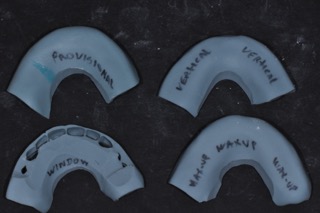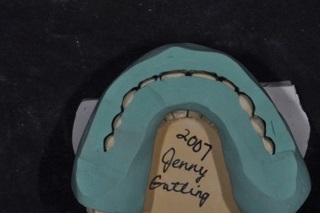Taking a trip or vacation is a very exciting endeavor. Seeing new places, experiencing new cultures and sampling unusual foods are experiences that we all enjoy. To make the most of that trip and experience, it is common to consult a guidebook of the region or area.

Guidebooks are resources to help make your trip special and provide information that is necessary for creating a safe and enjoyable experience. We may consult pamphlets or the internet to gain information on the area, or to get specific details of a town, festival, food or other item. Guidebooks provide a wealth of information that can make your trip or vacation a life-changing event.
There are a few specific items that guidebooks provide. First, they are a resource for giving directions to destinations that are new and different from your previous vacation spots. If used properly, they keep you from getting lost by providing guidance in surroundings that are confusing or challenging. They contain very detailed information about the location you are visiting. The nuances of the new location are very detailed within the guidebook.
The most important parameter is that they provide insurance for achieving a good experience. Those of us who have used guidebooks for new destinations realize that we don’t know how we ever had successful vacations without them. We use them whenever and wherever we go.
So why would I spend time talking about vacation guidebooks? What do vacation guidebooks have in common with preparation design? In the Restorative Design workshop, Bob Winter and I discuss the concept of outcome-based preparation design. “Outcome-based” refers to utilizing the final restorative contours and choice of material to act as a “guide” for ideal tooth preparation. This ideal preparation provides for adequate restoration strength, acceptable shade and conservation of tooth structure. Predictable results are achieved if the “outcome” acts as the reference.
Outcome-based tooth preparation
Just like our vacations, outcome-based tooth preparation is a “new destination” for many dentists. The concept of designing the tooth preparation around the choice of material is foreign for most dentists. They have “never been there before.”
As a result, “guidance” is necessary for creating a successful outcome. The guides I am referring to are the preparation guides that are utilized to ensure proper tooth preparation contours and support for the restorative materials of choice.
These preparation guides provide very detailed information of tooth contour as it relates to the speck preparation. They are the “guidebooks” for giving direction as the tooth reshaping occurs. The indices are constant reference guides to be utilized during the entire process to ensure we “stay the course” of achieving our desired result.

The “outcome” of outcome-based preparation is typically the diagnostic wax-up. Prior to beginning any trip or vacation, thought and planning has to be initiated. We create the vision of the trip we are attempting to arrange. This vision incorporates all the objectives and desires of the planned vacation.
In dentistry, the diagnostic wax-up is that vision. Tooth length, incisal edge position, contour, etc. are all integrated into the wax-up to give us the “desired destination.” From this vision, we now refer to the “guidebooks” or preparation guides to act as the “road map” for getting us there.

Preparation guides are fabricated from the diagnostic wax-up. Typically, these indexes are made with silicone putties. Laboratory putties are generally best (e.g., Siltech (ivoclar), Platinum95 (Zermack), etc.) as they provide adequate density and minimal distortion.
Additionally, if the index is well-adapted to the wax-up model, the minute details of contour from the wax-up are accurately captured. Generally these putties are two-part, catalyst and base systems. The appropriate amount of material is thoroughly mixed and adapted to the wax model in a “horseshoe” shape from second molar to second molar. Ideally, the index should have a minimum 2 mm thickness. The silicone should extend 3-4 mm into the vestibular areas. The palatal extension should also be 3-4 mm of extension.
The critical factor is the adaptation of the index. To act as a preparation guide, no air bubbles or gaps can be incorporated into the index. Multiple indices are fabricated for use, as different index styles are utilized depending on the need for visibility and preparation design.
Preparation depth and design using silicone indexes
The preparation guides are used as “road maps” of the tooth preparation process. Because they are fabricated from the “outcome” of final design, the shape, contours and depth of tooth preparation may be checked and verified throughout the process. Although depth cutting burs may be utilized to control initial preparation depth, the silicone guides are the only tools available for accurate verification that “outcome matches design!”
There are many styles of silicone indexes that may be utilized for reference of preparation depth and design. Two of the most common types are the window index and the vertical index.

The window index is typically used for determining preparation depth of the anterior teeth when restoring veneers or full coverage crowns. This index is fabricated by removing the silicone from cuspid to cuspid, approximately 3 mm gingival to the incisal edges. This “window” allows for visualizing both the facial and lingual preparation depth at approximately the incisal and middle third area of the tooth.
This area is the most common area of the tooth preparation to be under-reduced for adequate porcelain depth. Using this index appropriately aides in eliminating this under-reduction. These indexes are easily fabricated for both upper and lower anterior teeth.

The vertical index is a very versatile index. It may be used effectively in all areas of the mouth. These indexes are simple in design, but extremely effective in providing depth of reduction, relative to the “outcome” or diagnostic wax-up.
A vertical index is created by simply sectioning the horseshoe-shaped silicone index vertically through the center of the desired tooth to be evaluated. Assuring that the index is properly supported by the adjacent teeth, the amount and degree of tooth preparation may be evaluated by visualizing the amount of restoration space created as compared to the wax-up contours captured by the index. Over- or under-reduction may be easily assessed. Multiple vertical slices are possible with one index.

Many other index styles or variations may be fabricated, depending on tooth position and need for visualization. A “palatal” index, a “bookmark” index or a “facial” index are just a few of the many other styles that may be made. The designs and possibilities are endless.
Silicone may be molded, shaped and sectioned into any form that can be thought of or needed. The important aspect is that there is “intention” to preparing teeth for material strength, tooth shade and structural integrity.






Indexes are the “guidebooks” for ensuring that the intention plays out and there is long-term predictability and success for the ultimate restoration. It is unlikely you would venture to an unknown place or location without referencing a guidebook of some sort. Just like a guidebook for a vacation, silicone indexes provide direction and reference for points unknown. Don’t begin a tooth preparation without them!
Jeff Bonk, D.D.S., P.C., Spear Faculty and Contributing Author - http://jeffreybonkdds.com
(Click this link for more dentistry articles by Dr. Jeff Bonk.)